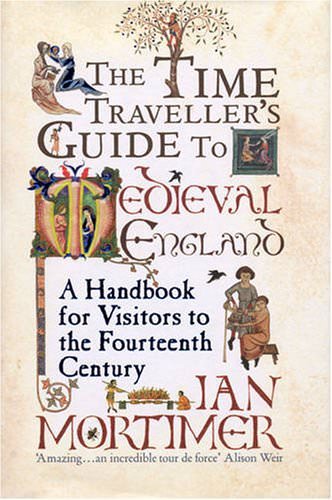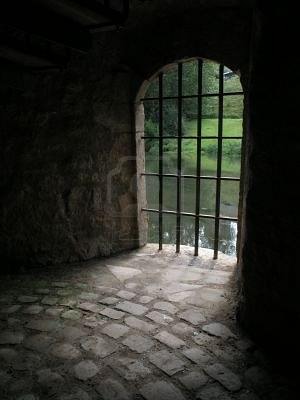Medieval Tendirs of Baku
Medieval Tendirs of Baku By Kamil Ferhadoglu Azerbaijan Archeology, Vol.4:1-2 (2002) Synopsis: Archeological excavations at various sites in Icheri Sheher have opened plenty of tendirs…
The Modern Invention of Medieval Music
The Modern Invention of Medieval Music: Scholarship, Ideology, Performance By Daniel Leech-Wilkinson (Cambridge University Press, 2002) Read Chapter 1: The invention of…
The Republican Idea
The Republican Idea By William J. Connell Renaissance Civic Humanism: Reappraisals and Reflections, edited by James Hankins (Cambridge University Press, 2000) Synopsis: Examines…
The First Lithuanian Book in Print
The First Lithuanian Book in Print By Leonardas Vytautas Gerulaitis Lithuanus: Lithuanian Quarterly Journal of Arts and Sciences, Vol.44:2 (1998) Synopsis: Examines the development…
Ayyubids, Mamluks, and the Latin East in the Thirteenth Century
Examines the relations between Muslim states in Syria and Egypt with the Crusader States after death of Saladin in 1192, and how did this relationship with the decline of the Ayyubid dynasty and the rise of the Mamluks.
The Islamic Origins Debate Goes Public
The Islamic Origins Debate Goes Public By Peter von Sivers History Compass, Vol.1 (2004) Abstract: A central part of modern secularization has been…
Ethnogenesis: A Contested Model of Early Medieval Europe
Ethnogenesis: A Contested Model of Early Medieval Europe Audio podcast given at Macquarie University (February 2007) Length: 20 minutes This podcast is a…
Medieval Christianity: The State of the Field
Medieval Christianity: The State of the Field By Katherine J. Gill Religion Compass, Vol.1 (2004) Abstract: As in other academic disciplines, historical Christianity…
The Study of Canon Law and the Eclipse of the Lincoln Schools, 1175–1225
The Study of Canon Law and the Eclipse of the Lincoln Schools, 1175–1225 By Frans Van Liere History of Universities, edited by Mordechai…
The Chronicle of Ibn al-Athir for the Crusading Period from al-Kamil fi’l-Ta’rikh
The Chronicle of Ibn al-Athir for the Crusading Period from al-Kamil fi’l-Ta’rikh Translated by D.S. Richards Ashgate Publishing, 2006-8 The Chronicle of Ibn…
The Man Who Believed He Was King of France: A True Medieval Tale
The Man Who Believed He Was King of France: A True Medieval Tale By Tommaso di Carpegna Falconieri, Translated by William McCuaig University of Chicago…
The Medieval Prison: A Social History
The Medieval Prison: A Social History By Guy Geltner Princeton University Press, 2008 ISBN: 978-0-691-13533-5 The modern prison is commonly thought to be the…
The Time Traveller’s Guide to Medieval England: A Handbook for Visitors to the Fourteenth Century
Imagine you could travel in time, back to the fourteenth century. What would you see? What would you smell? More to the point, where are you going to stay? Should you go to a castle or a monastic guest house? And what are you going to eat? What sort of food are you going to be offered by a peasant or a monk or a lord?
Sanctity in the North: Saints, Lives, and Cults in Medieval Scandinavia
Sanctity in the North: Saints, Lives, and Cults in Medieval Scandinavia Edited by Thomas Andrew DuBois University of Toronto Press, 2008 With original translations…
Conception Through Infancy in Medieval English Historical and Folklore Sources
Conception Through Infancy in Medieval English Historical and Folklore Sources By Barbara Hanawalt Folklore Forum, Vol. 13:2 (1980) Synopsis: Uses coroners rolls, a…
Western Africa To circa 1860 A.D.: A Provisional Historical Schema Based On Climate Period
Western Africa To circa 1860 A.D.: A Provisional Historical Schema Based On Climate Period By George E. Brooks African Studies Program, Indiana University:…
Charles Homer Haskins and Medieval Science
Charles Homer Haskins and Medieval Science By Edward Grant Lecture delivered in 1984 at a session entitled “Medieval History in America: Charles Homer…
The Wife of Bath: Sexuality vs. Symbol
The Wife of Bath: Sexuality vs. Symbol By Frances Beer Canadian Women’s Studies, Vol. 3:2 (1981) Introduction: In the figure of the Wife…
Reclaiming the Sheela-na-gigs: Goddess Imagery in Medieval Sculptures of lreland
Reclaiming the Sheela-na-gigs: Goddess Imagery in Medieval Sculptures of lreland By Ann Pearson Canadian Women’s Studies, Vol. 17:3 (1997) Introduction: The small, sexually-specific…
The Role of Women in Musical Life: The Medieval Arabo-Islamic Courts
The Role of Women in Musical Life: The Medieval Arabo-Islamic Courts By Suzanne Meyers Sawa Canadian Women’s Studies, Vol. 8:2 (1987) Synopsis: Examines the…
“She Swims and Floats in Joy”: Marguerite Porete, an “Heretical” Mystic of the Later Middle Ages
“She Swims and Floats in Joy”: Marguerite Porete, an “Heretical” Mystic of the Later Middle Ages By Kathleen Garay Canadian Women’s Studies, Vol.…
The Evolution of Iter
The Evolution of Iter By William Bowen CAML Review, Vol. 32:1 (2004) Synopsis: Examines the development of the Iter database, created at the…
Creating a Gateway to the Renaissance: The Iter Project
Creating a Gateway to the Renaissance: The Iter Project By William Bowen CAML Review, vol.25:3 (1997) Synopsis: Examines the development of the Iter…
The Writings of Julian of Norwich as Accomodation and Subversion
Julian’s status as presumed virginal celibate female mystic and anchoress (hermit) separated her from, and elevated
her above, the conventional status of “woman” during the medieval period
Prisoners in the Castellany of Arras in the Early Fourteenth Century
The fiscal arrangements for the prison, including the charges on prisoners and the provision made for indigent prisoners, can be used to obtain other information on such matters as normal terms of imprisonment, the composition of the prison population, prison conditions, and the fate of prisoners.


